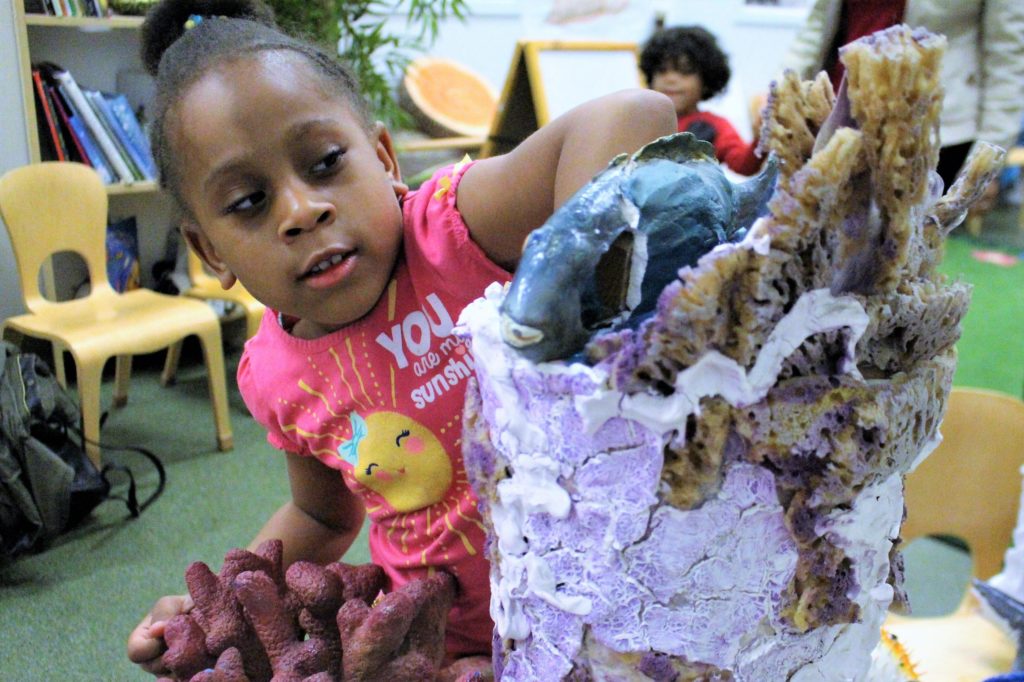


“What is a fish shaped like? Are they little squares?”
“No!” cry the students of Goddard Riverside’s Head Start class, watching as Bilingual Science Educator Bilexis Casado of the American Museum of Natural History begins drawing a fish.
“Would we find a fish in a tree? Why not?”
“They don’t have arms!”
“That’s right, Kayden. They don’t have arms so they can’t climb a tree. What are some other reasons?”
Four- and five-year-olds aren’t renowned for their attention spans, but these Head Start students are focused. They lean forward and raise their hands with gusto, and one boy is so excited he runs up and sits right in front of the whiteboard. As the fish drawing takes form, the children call out information they’ve gleaned on previous visits, and eagerly absorb new facts about scales and gills.
Then it’s time for an adventure. Casado and teacher Caitlin Coe outfit the students with khaki vests and clipboards. They’re headed to the museum’s Cuba exhibit.
“Your job is to be a scientist so you’re going to count: How many fish live here? What colors are they? How many are big and how many are small? You have a big job ahead of you!” Coe tells them.
The Head Start students visit a classroom at the museum once a week throughout the school year, studying ecosystems and the organisms that live in them. Education staffers at the museum also visit the Head Start on 95th Street to help teachers there coordinate their lesson plans with the program. The goals include teaching students the tools of scientific inquiry, such as close observation, asking questions, and using scientific tools and vocabulary.
The program also plays another critical role: it helps ensure these children and their families feel comfortable at the museum. Parents are encouraged to come to the weekly classes as “learning partners,” and the museum gives out free tickets so that families can come on their own. That’s important, because research suggests lower-income Americans are more likely to feel excluded from cultural institutions, and are therefore less likely to use them. One recent study found about a third of adults felt unwelcome at science museums. That feeling was strongest at the bottom of the income scale.
That’s a challenge for museums, who need broad support in order to thrive—and for Americans, who are missing out on opportunities to learn and grow.
Upstairs in the Cuba exhibit, the students use flashlights to peek into every corner of the coral reef dioramas. They avidly count fish, noting their characteristics and writing down their results.
Anielka Cabrera is working with her son Maxwell. She says Maxwell was a little shy in the museum at first, but now “he wants to touch and discover everything.” He also talks about these classes at home: “He’ll say, ‘Mommy, did you see the fish, did you see the snail?'”
The Cabreras are definitely developing a museum habit. Maxwell’s older brother also attends a school program there. On the weekends, the boys will ask Anielka to take them there to explore the other exhibits. She says they especially like the solar system section—and of course, the famous dinosaur collection.
“They want to go with me because they want to learn more,” she says with a smile.